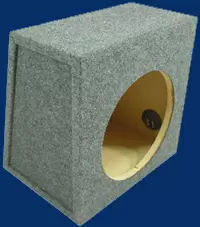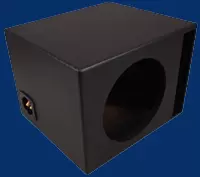Sealed Vs Ported Subwoofer Boxes
So you are ready to start building your car audio system? Where to start? Well a good place to begin is with the subwoofer enclosure. There are many types of enclosures for every vehicle and listening style and each has its advantages and dis-advantages. As just a general rule of thumb it is important to make sure your subwoofers will match the chosen enclosure so I recommend knowing what you are planning to run before starting. So for instance before deciding on a subwoofer box you will want to check what the recommended airspace specifications are for that model. Now we will discuss a few different options available for enclosures.
Sealed Subwoofer Boxes
The most common and versatile type of enclosure is sealed. This style enclosure is ideal for any application where space is going to be an issue. In some cases a sealed recommendation for subwoofer box will be half of what the ported recommendation is. They also have the advantage over ported and band pass enclosures in terms of overall sound clarity. A sealed subwoofer box will deliver a tight, clean and accurate bass response and have a flat frequency response curve. In general a sealed box will be for listeners looking for sound quality driven system that is clean across the entire frequency band.

Vented & Ported Subwoofer Boxes
In general most competition SPL vehicles tune to high frequencies around 45Hz or higher. This setup would be designed for absolute maximum output but sacrificing a great deal of sound quality. A ported box tuned 25Hz will still allow your system to hit the ultra low bass notes while still keeping sealed like sound quality. The disadvantage is the enclosure will then have a fairly flat frequency range. And then the most common frequency range found usually in pre-built ported / vented enclosures is around 33 - 35Hz. At this frequency the enclosure will still deliver much more bass output than a sealed box but at the same type with still retain most of the sound quality. In other words you will get the best of both worlds with a ported box run at about 33Hz.

Bandpass Subwoofer Boxes

Click below to view our selection of:
Sealed Subwoofer Boxes -
Vented & Ported Subwoofer Boxes -
Bandpass Subwoofer Boxes
